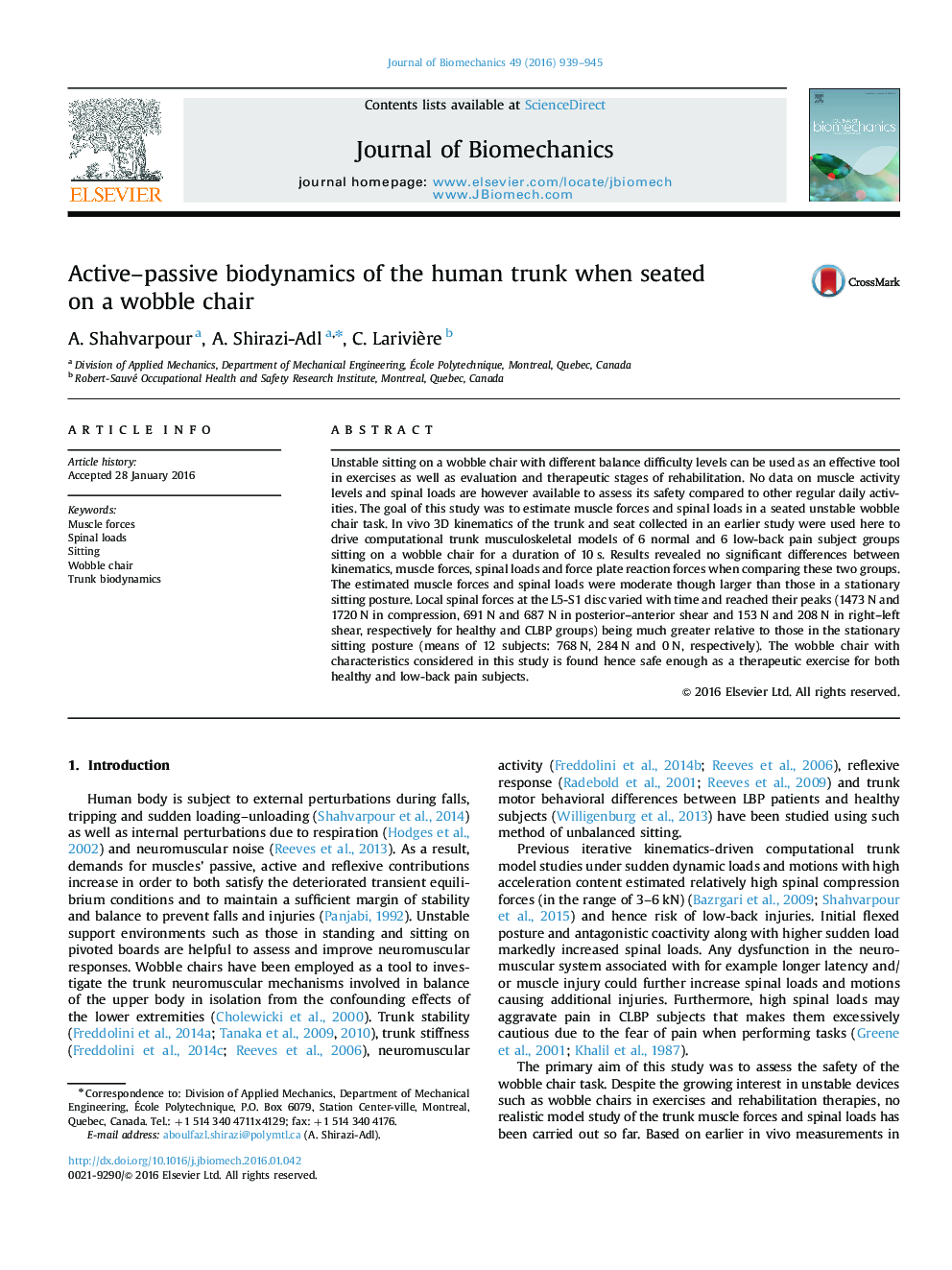| کد مقاله | کد نشریه | سال انتشار | مقاله انگلیسی | نسخه تمام متن |
|---|---|---|---|---|
| 871767 | 910197 | 2016 | 7 صفحه PDF | دانلود رایگان |
Unstable sitting on a wobble chair with different balance difficulty levels can be used as an effective tool in exercises as well as evaluation and therapeutic stages of rehabilitation. No data on muscle activity levels and spinal loads are however available to assess its safety compared to other regular daily activities. The goal of this study was to estimate muscle forces and spinal loads in a seated unstable wobble chair task. In vivo 3D kinematics of the trunk and seat collected in an earlier study were used here to drive computational trunk musculoskeletal models of 6 normal and 6 low-back pain subject groups sitting on a wobble chair for a duration of 10 s. Results revealed no significant differences between kinematics, muscle forces, spinal loads and force plate reaction forces when comparing these two groups. The estimated muscle forces and spinal loads were moderate though larger than those in a stationary sitting posture. Local spinal forces at the L5-S1 disc varied with time and reached their peaks (1473 N and 1720 N in compression, 691 N and 687 N in posterior–anterior shear and 153 N and 208 N in right–left shear, respectively for healthy and CLBP groups) being much greater relative to those in the stationary sitting posture (means of 12 subjects: 768 N, 284 N and 0 N, respectively). The wobble chair with characteristics considered in this study is found hence safe enough as a therapeutic exercise for both healthy and low-back pain subjects.
Journal: Journal of Biomechanics - Volume 49, Issue 6, 11 April 2016, Pages 939–945
